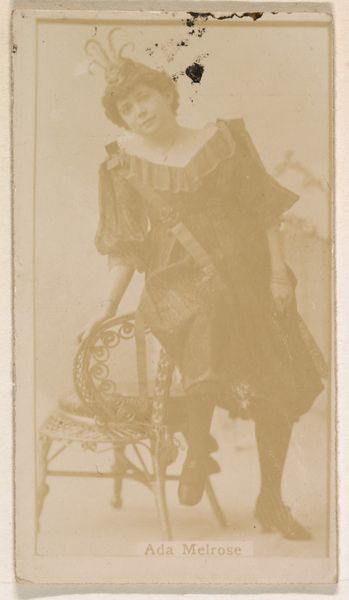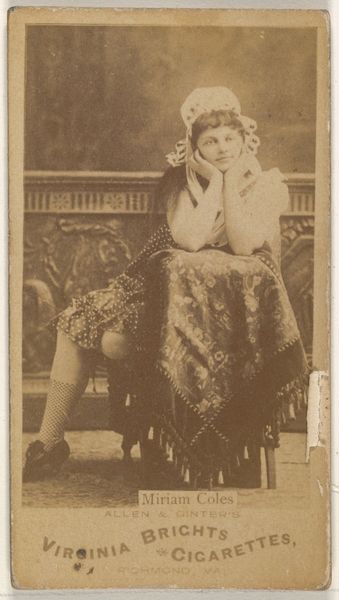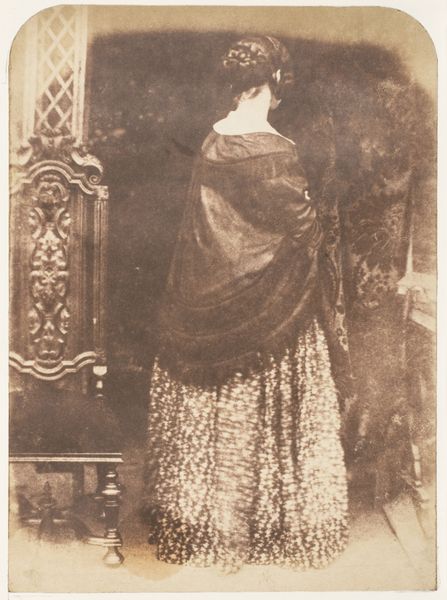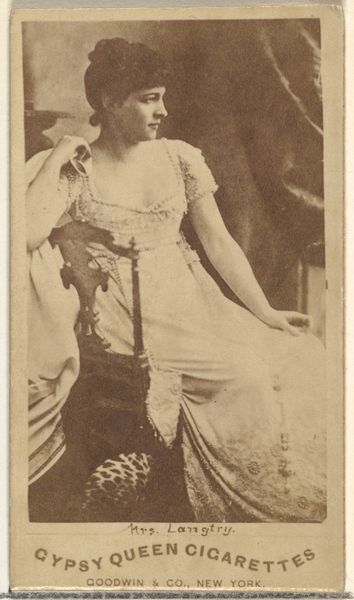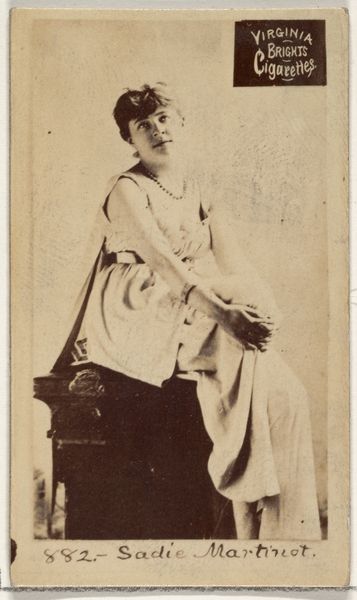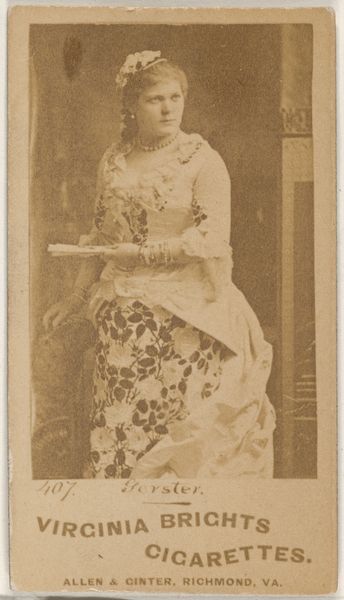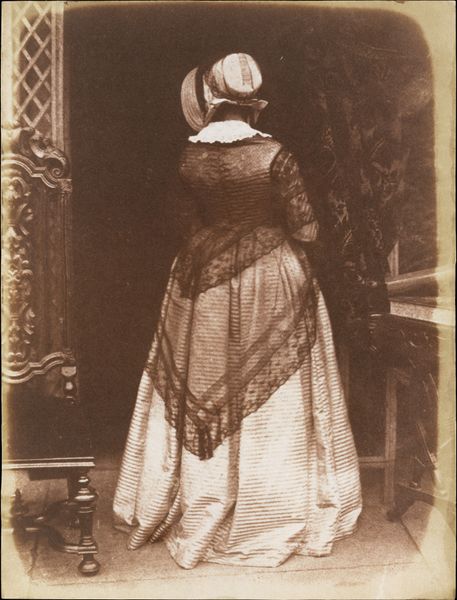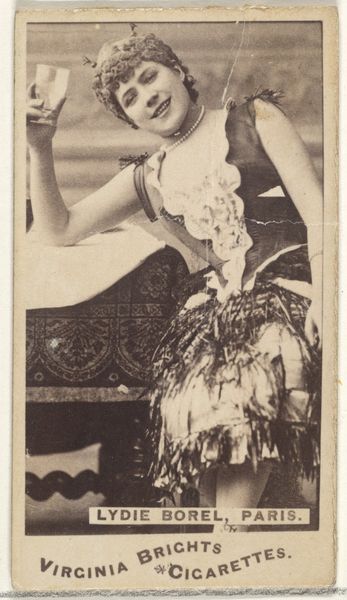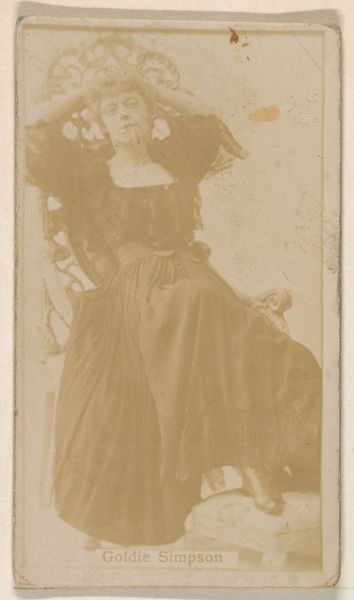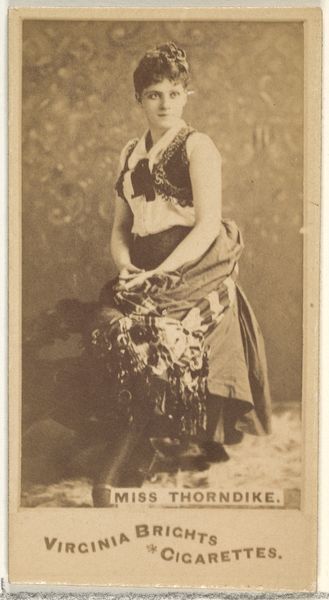
Copyright: Public domain
Editor: Here we have Gertrude Kasebier's 1912 photograph, "Lucille Thomajon." It's rendered in these gorgeous sepia tones, and what I notice first is the incredibly detailed fabric of her shawl. The whole thing has a very soft, dreamlike quality to it. How do you read this image, thinking about the materials involved? Curator: Looking at this piece through a materialist lens, I'm immediately drawn to the tangible aspects of its creation and the implied labor involved. The photographic process itself – the chemicals, the paper, the darkroom – becomes a central point of interest, even before we consider the subject. And yes, the shawl—the embroidery! Who made that and under what conditions? Kasebier is presenting us with a portrait, but I think she's also presenting us with an intersection of craft and industry. What do you think of the social implications around the presentation of this subject through a photographic lens versus painting at the time? Editor: That's a fascinating point! I hadn't considered how the choice of photography itself comments on accessibility and class. A painted portrait would have been much more exclusive, suggesting a different level of wealth and status for both the sitter and the artist. Photography opens it up. Curator: Exactly! Photography in 1912 was becoming increasingly accessible but still retained a certain novelty. So Kasebier's choice of medium situates this work within a specific historical and economic context. Consider the dissemination of such images – reproduced and consumed by a wider audience than a unique painting ever could be. Does that change how we read the image and Thomajon’s presentation here? Editor: It really does. I’m thinking about how the availability of the photograph would create a different relationship to celebrity culture than what was available before photography, as the ability to reach a wider market democratizes who might become a public figure. This image makes me appreciate how material choices influence not just aesthetics, but also the broader social implications of art. Curator: Absolutely! Considering the materials and means of production opens up layers of meaning often overlooked. This approach allows us to question not only the image itself, but the entire system that produced and consumed it.
Comments
No comments
Be the first to comment and join the conversation on the ultimate creative platform.
